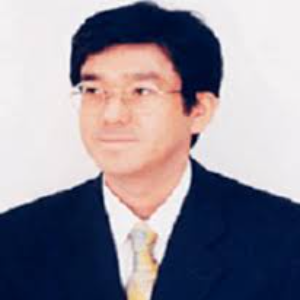Title : Circular defect in photonic crystal (CirD) laser for intra-chip optical interconnects
Abstract:
By the analogy of inter-chip optical interconnects, the target density for intra-chip optical interconnects is estimated to be 10 Pbps/cm2. This value may not be possible anymore by so called Si-photonics that is the state-of-the-art technology, because its target density is as small as 10 Tbps/cm2. The authors have proposed a breakthrough by using 2 dimensional photonic crystal (2D-PhC). The laser has a circular defect (CirD) cavity in the triangular PhC lattice. Compact optical modules with a wavelength division multiplexing (WDM) function can be constructed by integrating several CirD lasers with one PhC line-defect waveguide for light output without a conventional optical multiplexer that have huge footprint in comparison with CirD lasers. In the numerical analysis, uniform low threshold and a modulation speed of approximately 50 Gbps within a lasing wavelength range of 20 nm can be estimated for the CirD lasers, because quality factors (Q) of CirD lasers are expected to be several thousands. In addition, single-mode lasing operations of CirD lasers with a linewidth narrower than 0.07 nm and the side-mode suppression-ratio (SMSR) of approximately 30 dB have been experimentally confirmed by conducting optical pumping under room-temperature continuous-wave (RT-CW) conditions. The lasing wavelengths of CirD lasers can be modulated over 20 nm. Thus, the bandwidth capacity of 1 Tbps may be realized by 20 channels of WDM within footprint of approximately 100 mm squire that equals 1 × 10-4 cm2. This meets the extremely high bandwidth density requirement of 10 Pbps/cm2 for intra-chip optical interconnects.


